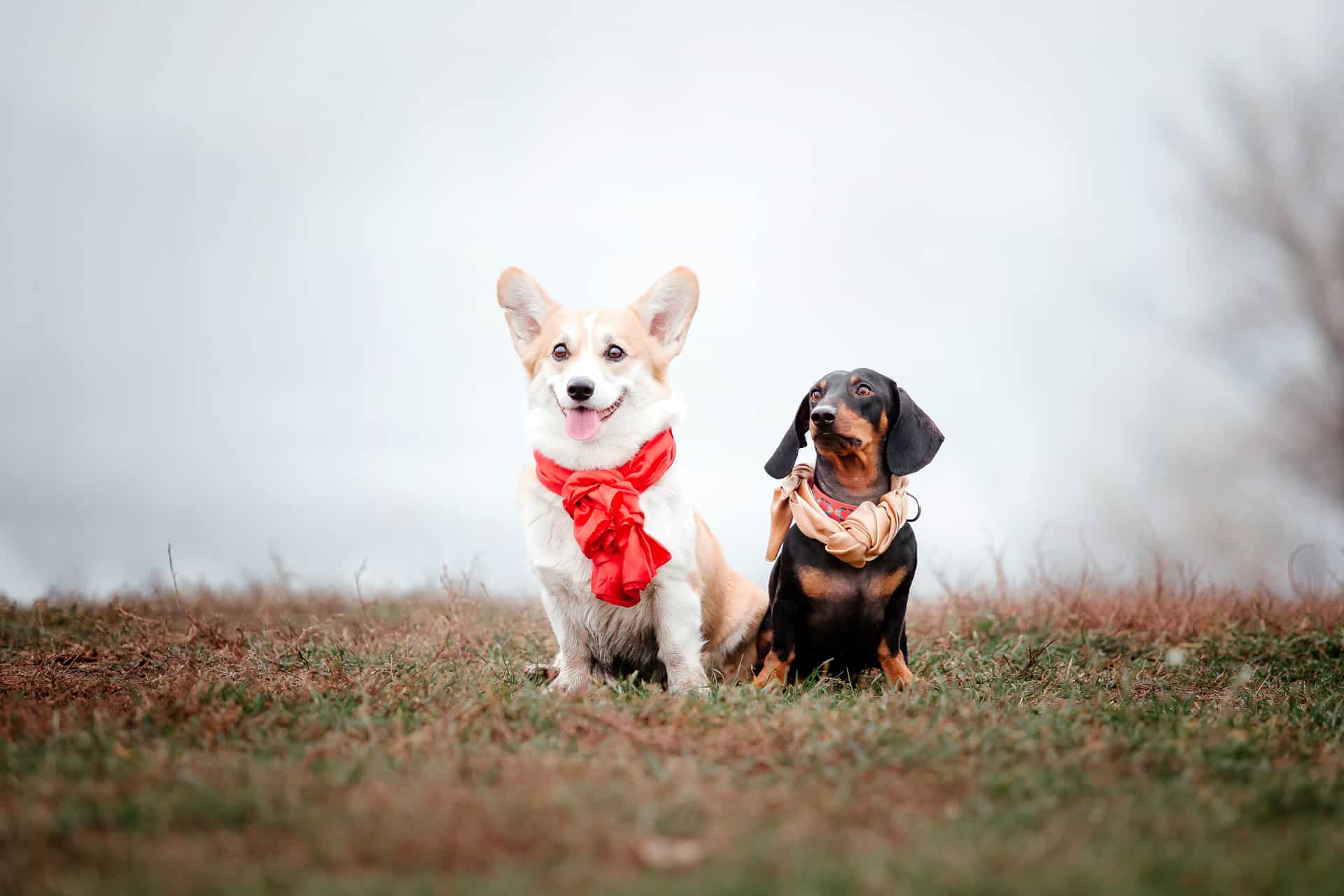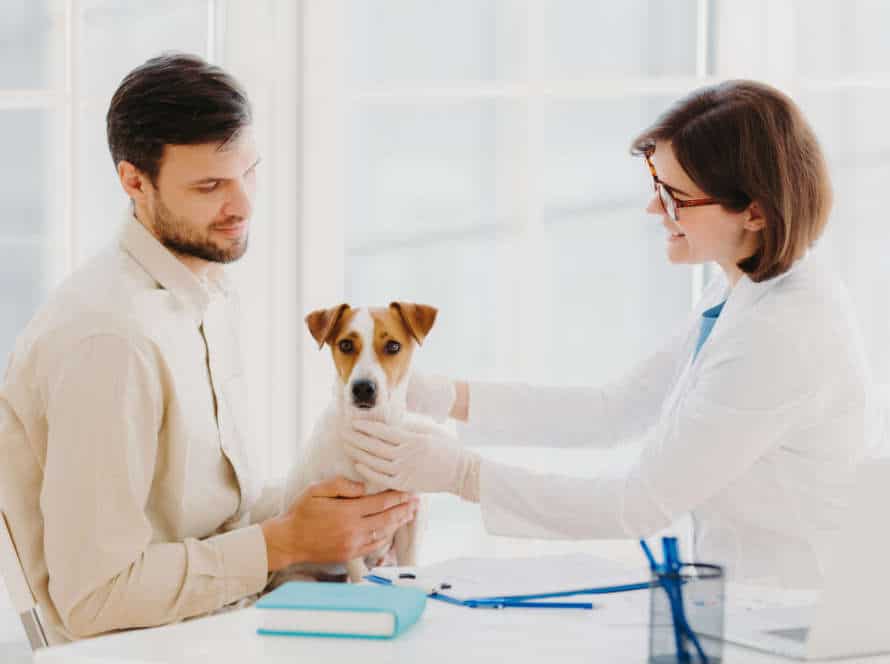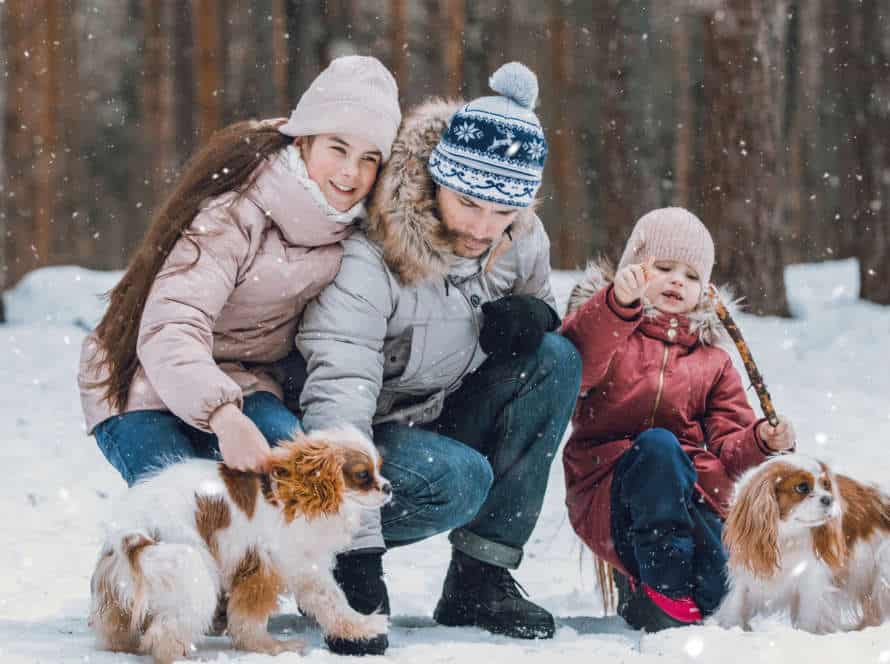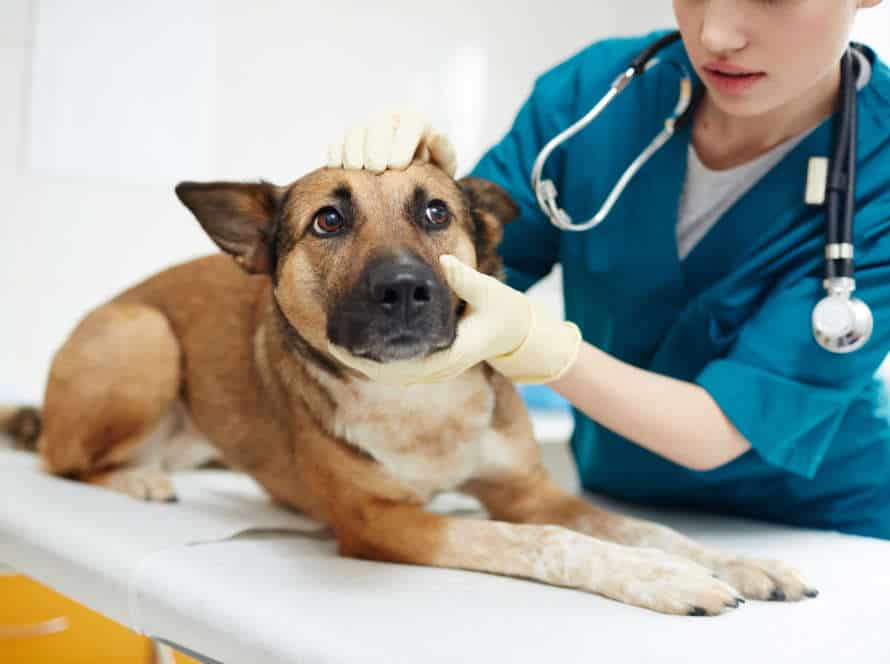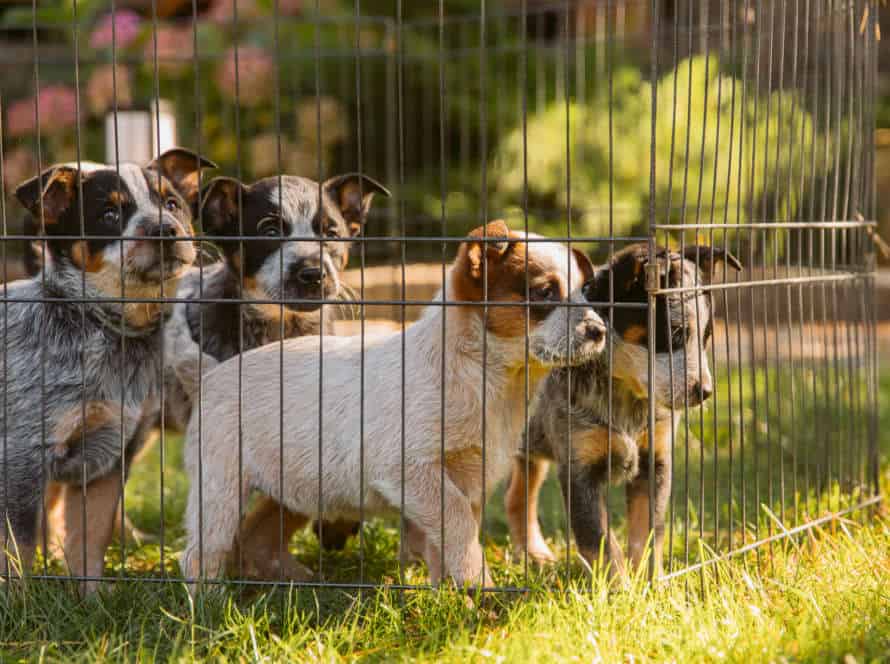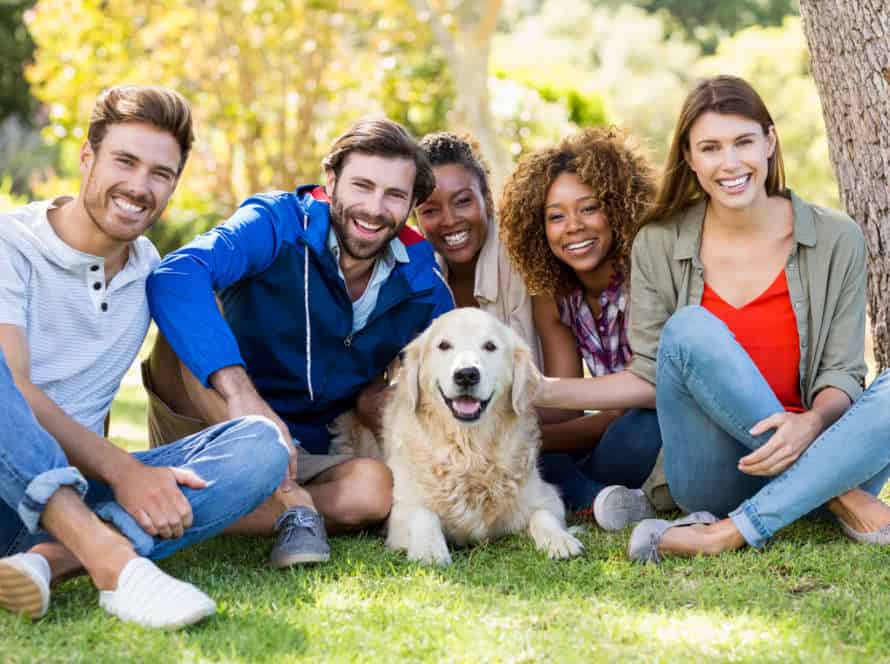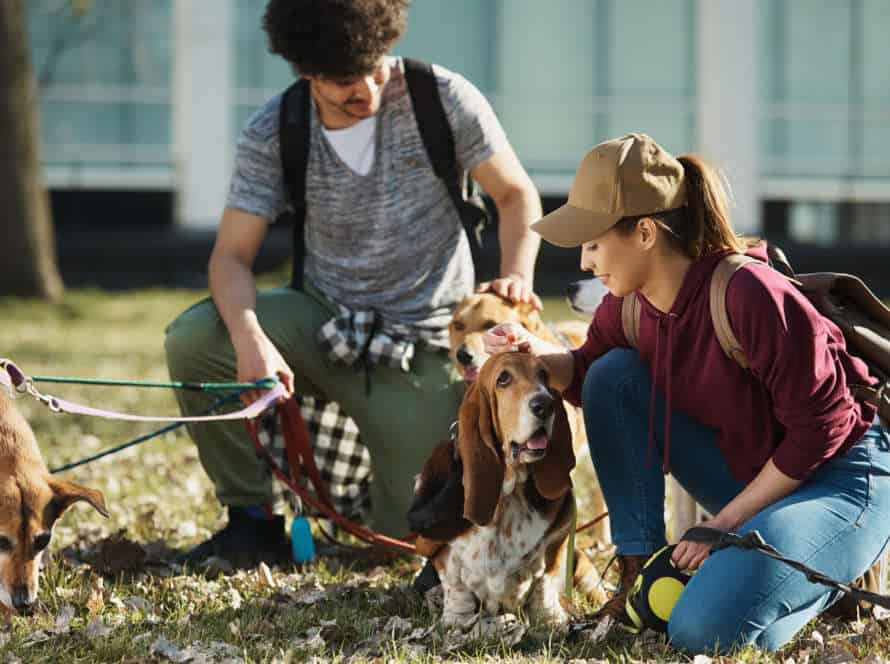How Size Affects Dog Grooming and Maintenance
The size of a dog matters for their grooming. Smaller breeds are simpler to groom, whereas larger dogs need more effort and supplies.
Small dogs have short coats and less skin folds, making them easier to wash, brush, and trim. They also shed less and need less frequent grooming.
But larger dogs have longer fur and more skin folds, causing matting, tangles, and infections. They also shed more and need more regular grooming like brushing, bathing, trimming, and nail clipping.
No matter their size, all dogs need regular grooming. Ask a vet or a groomer for the best care for your pup, depending on their size, breed, age, and health.
Pro tip: Grooming not only makes them look and smell nice, but also stops skin irritations, infections, and behavioural problems.
Grooming Needs of Small Dogs
Small pups, such as teacups and mini breeds, need special grooming due to their size. Even if their coats aren’t as thick and luxuriant as bigger breeds, they must still get regular grooming to keep them healthy and looking their best. In this post, we’ll explore the special grooming needs of small dogs, plus how size affects grooming maintenance.
Bathing and Drying Techniques for Small Dogs
Bathing and drying small dogs needs special techniques that fit their size and grooming needs. Small dogs can become anxious during grooming. Here are some tips:
- Use lukewarm water, so as not to scald delicate skin.
- Put a non-slip mat in the sink or bathtub, to avoid slipping.
- Use mild shampoo and be careful around eyes, ears, and nose.
- Rinse with lukewarm water to prevent irritation.
- Wrap in a soft towel and pat dry.
- Use a gentle hair dryer on low heat, not to burn skin.
- Comb fur to get rid of tangles and knots.
- Praise your dog throughout the process, to keep them relaxed.
Remember, grooming is key to your pup’s health and happiness. You and your furry friend can have a positive experience if you use these techniques.
Brushing and Trimming Small Dogs’ Hair
Brushing and trimming small dogs’ fur is essential for their health and hygiene. Grooming needs can vary depending on the size and breed. Small pooches require more frequent grooming, as they’re often indoor dogs. Here are some tips:
- Use a soft-bristled brush to remove tangles and knots. For short-haired breeds, use a rubber brush or a grooming glove.
- Use sharp, high-quality clippers to trim the body, legs, and tail. Be careful around sensitive areas like the face, ears, and paws.
- Scissors will help trim excess hair and make precise cuts around the face and paws.
- Bathe the dog only when necessary, and use a dog-specific shampoo and conditioner.
- Clean the ears and brush the teeth regularly to maintain hygiene.
- Pro tip: Regular grooming is great for physical health and appearance – plus, it strengthens the bond between you and your furry friend!
Nail Clipping and Ear Cleaning for Small Dogs
Nail clipping and ear cleaning are critical for small dogs. Their size affects their grooming needs.
Nail clipping: Small dogs have small nails. They can grow too long, making it hard to walk. Use special clippers to trim the nails. Make sure not to cut too close to the quick. That could cause pain and bleeding. Regular clipping prevents overgrowth and helps the dog have healthy feet.
Ear cleaning: Small dogs have ears that are prone to wax buildup, infections and other issues. Their small canals trap dirt and debris. Use cotton balls or swabs to clean the outer ear. Be careful not to insert anything into the ear canal. Regular ear cleaning prevents infections and promotes good health in small dogs. Their ears are more sensitive to external factors due to their size.
Grooming Needs of Medium Dogs
Pups vary in size and form. Thus, when deciding on a grooming plan, it’s key to think about your pup’s size. Grooming for medium sized dogs, like retrievers, collies, and more, is different from larger or smaller dogs. Here we’ll look at the grooming needs of a medium-sized pup and how to provide them with the best care.
Bathing and Drying Techniques for Medium Dogs
Medium-sized canines need proper grooming to stay in good health, be clean, and look their best. Bathing and drying techniques are essential parts of grooming medium-sized dogs. Here’s what to do:
- Brush the coat to remove tangles or mats before bathing.
- Use a shampoo meant for pooches and lather the coat, avoiding the eyes and ears.
- Rinse the coat with lukewarm water until all traces of shampoo are gone.
- To dry the coat, first use a towel to remove excess water.
- Then, use a dryer made for pets on a low setting.
- Comb the coat while drying to stop tangles or mats.
Remember, different breeds have different grooming needs. Knowing your pup’s breed-specific needs will help keep the coat shiny and healthy.
Brushing and Trimming Medium Dogs’ Hair
Medium-sized dogs need special grooming. Brushing and trimming the hair is important for the coat’s health and look.
Here are some tips:
- Brush regularly. Get a slicker brush, bristle brush or comb, depending on the hair’s length and texture.
- Trim the hair around the ears, paws and anus. Use grooming scissors or a clipper.
- Bathe your dog with a mild shampoo to keep their coat clean and healthy.
Regular grooming keeps them looking good and healthy.
Nail Clipping and Ear Cleaning for Medium Dogs
Medium-sized dogs need regular grooming for their cleanliness and look. Nail clipping and ear cleansing are two must-do tasks for medium-sized pups. This can help them avoid infection and other health issues.
- Nail Clipping: Take the pup’s paw and use a sharp clipper to trim the tip of each nail. Be careful not to cut the quick, which contains blood vessels and nerves. If you accidentally do, use styptic powder to stop the bleeding.
- Ear Cleaning: Use an ear-cleaning solution and a cotton ball to softly clean the inside of the pup’s ears. Look for signs of redness, swelling, and odor which might show an infection. Don’t put anything into the ear canal that could harm the eardrum. Consult a vet if you see anything strange.
Pro Tip: Reward your pup with treats or compliments while grooming to make it a pleasant experience!
Grooming Needs of Large Dogs
Grooming for large pups is diff from smaller breeds. These larger pooches need more care, as their coats, nails, and teeth are harder to reach. It’s crucial to know the grooming needs of big dogs and why they need more attention than smaller ones. In this article, we’ll look at the differences in grooming between large and small dogs.
Bathing and Drying Techniques for Large Dogs
Bathing and drying large dogs requires special attention and care. Here are some tips:
- Use a bathtub or basin with lukewarm water.
- Get a shampoo and conditioner made for large dogs.
- Rinse the shampoo and conditioner thoroughly, paying extra attention to underarms and tail.
- Towels can remove excess water. Use a hairdryer with a diffuser on low heat, if needed.
- Brush the dog’s coat after bathing to prevent matting and promote healthy skin.
Brushing and Trimming Large Dogs’ Hair
Brushing and trimming your large pup’s fur is necessary to keep their coat healthy and avoid knotting. Here are some tips to remember:
- Choose the perfect brush – use a slicker brush or a combined brush to take off loose fur and dirt from your doggo’s coat.
- Trim the fur around their paws – scissors should be used to cut the hair around their feet for better grip and to stop tangles.
- Cut the fur near the ears and eyes – scissors should be used to cut the hair around their ears and eyes to stop infection and skin issues.
- Focus on the undercoat – large dogs usually have a thick undercoat that needs extra attention as you brush and trim.
- Stay patient – grooming a big dog takes time, so be patient and make it a positive experience for them.
Pro tip: Not only does regular brushing and trimming help keep their coat healthy, but it also gives you a chance to bond with them.
Nail Clipping and Ear Cleaning for Large Dogs
Grooming large dogs can be challenging. Nail clipping needs the right tools – clippers and styptic powder. Also, get a second person to help hold the dog still.
Ear cleaning needs cleaning solution and cotton balls. Don’t use cotton swabs as they can push debris into the ear canal.
Regular grooming of large dogs is essential for hygiene and health.
Pro tip: Make nail clipping a positive experience with treats and praise.
Maintenance of Small Dogs
Taking care of a pet? Size matters! Grooming and maintenance for small dogs is much different than for bigger ones. Here’s what to consider when dealing with small pooches. You need to change your approach! Think about the differences between them. This article will show you how.
Exercise and Diet for Small Dogs
To keep small doggos healthy and cheerful, a tailored workout plan and a nourishing diet are a must. These pup’s higher metabolisms require more frequent meals throughout the day – chow that is high in protein and low in carbohydrates.
Exercise too is vital for small dogs. Take ’em for little walks and have indoor playtime. But be careful not to overdo it, as they are prone to injuries.
Grooming-wise, small pooches require more frequent care, such as regular trimming and dental cleanings. Their size makes them more vulnerable to dental problems, so regular checkups are essential.
To sum up, with the right diet, exercise routine, and grooming, small dogs can lead a long and happy life. Pro tip: Work with a vet to create a personalized health and maintenance program for your small dog.
Health Issues to Watch Out for in Small Dogs
Small doggos are at risk for a variety of health issues. Pet owners should be aware of these to keep their pup happy and healthy!
- Dental problems can occur due to overcrowding in tiny mouths. Regular checkups and a balanced diet can help.
- Hypoglycemia is another issue, which can cause lethargy, shaking and seizures. Feeding small, regular meals and monitoring behavior can help.
- Joint issues, like hip dysplasia and luxating patellas, are also more common in small dogs. Exercise, maintaining healthy weight and cushioned beds can help prevent these.
- Skin allergies caused by fleas and other parasites can also affect small dogs. Grooming, parasite prevention and a hypoallergenic diet may be the solution.
Training Small Dogs: Tips and Tricks
Training small pups can be tough. But don’t worry, here are some tips for you to be successful!
- Stay consistent with playtime and training.
- Use rewards like treats, praise and playtime to positively reinforce.
- Be understanding of their limits. Small dogs have shorter attention spans and may need more breaks.
- Start with the basics like “sit,” “stay” and “come.” Then move onto harder commands.
- Allow them to experience new people and places. This will help prevent behavioral issues.
When it comes to grooming, their size matters. Regular baths and brushing is necessary. Nail trimming, teeth cleaning and ear cleaning are also musts!
Maintenance of Medium Dogs
Dog grooming and maintenance may depend on size. Medium sized pups have unique needs, different from small or large breeds. Let’s explore the particular needs of these dogs and how size affects maintenance.
Exercise and Diet for Medium Dogs
Medium-sized dogs need exercise and a healthy diet to keep their weight and health in check. Here are some tips:
- Exercise: Medium-sized dogs should have moderate exercise. Daily walks, playtime, and visits to the dog park are great. Plus, socialization and various activities are important.
- Diet: A balanced diet is key for medium-sized dogs. Give them high-quality food full of protein, fiber, vitamins, and minerals. Avoid human food that is high in fat or carbs – it can cause obesity. Give them fresh water and don’t overfeed.
- Pro Tip: Speak with a vet to work out the best diet and exercise plan for your pup, based on breed, age, and health status.
Health Issues to Watch Out for in Medium Dogs
Medium-sized dogs usually live around 10-13 years, and are usually healthy. But like all dogs, they can get certain health issues.
Some common ones are:
- Hip dysplasia – a genetic issue that affects the hip joint, leading to pain and arthritis.
- Obesity – they gain weight easily and that can cause joint issues, diabetes, and heart disease.
- Ear infections – floppy-eared dogs, like Beagles and Basset Hounds, get ear infections more often than those with upright ears.
- Hypothyroidism – a hormonal disorder that slows down metabolism, causing weight gain, hair loss, and skin problems.
The best way to prevent these issues is to give your dog regular exercise, a balanced diet, and vet check-ups. This will ensure a long and healthy life for your medium-sized pup!
Training Medium Dogs: Tips and Tricks
Training medium-sized dogs is a must for responsible pet owners. Here are a few tips:
- Start training your pup young and be consistent with your commands and rewards.
- Positive reinforcement techniques like treats, praise, and playtime can help.
- Regular exercise and playtime can prevent boredom and excess energy.
- Teach basic commands like sit, stay, come, and heel. Then move on to more advanced training.
- When giving commands, use a firm and confident tone but never use physical punishment or aggression.
- Each dog is unique and may need different training methods.
The size of the dog also affects their grooming and maintenance needs. Larger dogs need more exercise, food, and grooming than smaller ones. For medium-sized dogs, brushing their coat 2-3 times a week, regular baths, trimming nails, and cleaning ears is essential. Professional grooming every few months will keep your pup looking and feeling their best.
Pro Tip: Consistency, patience, and positive reinforcement are key. A well-trained dog is a happy and healthy dog!
Maintenance of Large Dogs
Giant pooches need more attention than pups of a smaller size. Pampering a large dog can take a lot of time and the tools for doing so are pricier. Additionally, walks and exercise should be more frequent and longer in order to suit their bigger body. Let’s look into maintaining large dogs in greater depth.
Exercise and Diet for Large Dogs
Large dogs need exercise and a nutritious diet to stay at an ideal weight and be healthy. For exercise, long walks, hikes, and fetching are great activities to keep large dogs active. Swimming is also a brilliant low-impact exercise for big dogs, specially those with joint issues.
A diet of good proteins, fats, and carbs is important for large dogs to sustain their growth, progress, and muscle mass. Avoid giving your large dog table scraps as they are often high in salt, sugar, and fatty items that may cause digestion issues and weight gain. Instead, choose quality commercial dog food made for large breeds.
Remember that the size of your dog affects grooming and maintenance. Big dogs need regular grooming to keep their fur and skin healthy. Regular brushing, baths, and trimming nails is critical to dodge skin problems, infections, and overgrown nails that can lead to pain and mobility issues.
Pro Tip: Ask your vet for the best exercise and diet plan for your large dog based on their age, breed, and health condition.
Health Issues to Watch Out for in Large Dogs
It is essential for owners of large dogs to be aware of health issues that can arise due to their size and breed. Here are some issues to keep an eye on:
- Hip Dysplasia: Commonly found in German Shepherds, Great Danes and Labrador Retrievers. Signs include limping, stiffness and difficulty rising or lying down.
- Obesity: Bigger dogs are more likely to become overweight or obese because of their size and appetite. This can lead to diabetes, joint problems and heart disease.
- Bloat: This is a severe situation that occurs when the dog’s stomach gets filled with gas and twists. Great Danes and St. Bernards are particularly vulnerable.
- Arthritis: As dogs age, they may develop arthritis in their joints. Large breeds are at higher risk due to their size. Signs include limping, stiffness and difficulty getting up or lying down.
Regular exercise, a healthy diet and routine check-ups with a vet can help prevent or manage these health issues.
Training Large Dogs: Tips and Tricks
Having a big dog can be a great experience, but it also presents its own set of unique challenges when it comes to grooming and maintenance. Here are some tips and tricks for training and caring for large dogs:
- Start Training Early: Large dogs are usually harder to train than small dogs. Begin training them from a young age to guarantee they obey commands.
- Exercise: Big dogs require lots of exercise to stay healthy and happy. So take them on walks or runs every day.
- Grooming: To maintain their health, larger dogs need to be groomed regularly. This includes brushing their fur and teeth, cleaning their ears, and trimming their nails. Scheduling regular grooming sessions with a professional can also help keep your pup looking and feeling great.
- Size Matters: A large dog’s size affects everything from their diet to their vet care. Bear this in mind when selecting a veterinarian, diet, and even grooming supplies.
With the appropriate training and grooming techniques, having a large dog can be a source of joy for any dog lover.
Frequently Asked Questions
1. How does size affect dog grooming and maintenance?
Different dog sizes require different grooming and maintenance routines. Smaller dogs typically require fewer grooming sessions, while larger dogs may need more frequent grooming due to their fur length and shedding tendencies.
2. Do smaller dogs require less maintenance than larger dogs?
Generally, smaller breeds require less maintenance than large breeds, but that isn’t always the case. Some small dogs have long, thick coats that require frequent grooming, while larger dogs with short fur may not require much grooming.
3. Can grooming affect a dog’s health?
Regular grooming is essential for a dog’s good health. Grooming helps keep a dog’s coat clean and free of tangles or mats, which can lead to skin irritations and infections if left unaddressed. Additionally, grooming can help identify health issues, like lumps or bumps, that may require veterinary attention.
4. What grooming tools are best for a large breed dog?
Large breed dogs require specific tools for grooming, such as large brushes and combs to tackle their thick fur. It’s important to invest in high-quality grooming tools, as they will be more effective and last longer than cheaper alternatives.
5. How often should I groom my dog?
How often you groom your dog varies based on their breed and coat type. Some dogs may only need grooming once a month, while others require weekly grooming sessions. Consult your veterinarian or a professional groomer for guidance on how often to groom your dog.
6. What are some common grooming mistakes pet owners make?
Some common grooming mistakes include using the wrong tools, not brushing out tangles or mats, cutting nails too short, and not seeking professional help when necessary. It’s important to educate yourself on proper grooming techniques or seek the assistance of a professional groomer.

